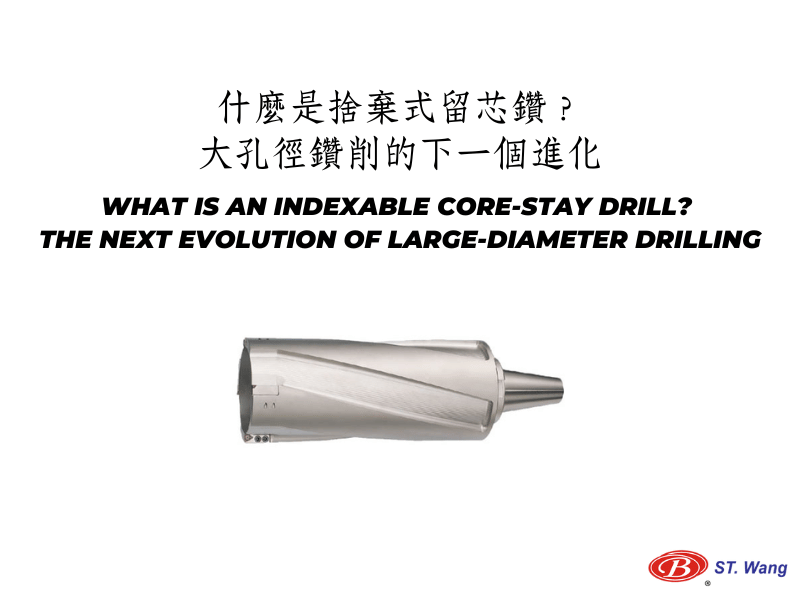Machining is always about speed, precision, and reliability but in today’s highly competitive world of manufacturing efficiency is paramount. The tools you employ directly influence your profit margins whether you’re manufacturing aerospace components, automotive parts, or high-tech electronic products. The indexable drill high-speed drill, tungsten carbide inserts and threading tools are all making a difference.
These aren’t simply updates of old software. They’re an intelligent way to work reducing the amount of downtime, cutting costs overall and producing better results with less effort. Let’s look closer at how they can help companies drill faster, cut more precisely and finish more quickly.

Image credit: stwang-tw.com
Indexable Drills: More Holes, Less Hassle
Drilling large holes used to be costly and long-lasting. Drills that were solid had to be sharpened. They wore quickly and slow the process. This is one reason why more machinists have been moving to an indexable drill. You can change inserts, not the entire tool when it becomes dull.
What makes indexable drills stand out is their efficacy. They are specifically designed to provide heavy-duty performance and long-running runs. They also require very little maintenance. With interchangeable inserts that reduce waste, minimize the inventory of tools, and ensure that your equipment runs longer. SHANG TZANG WANG ENTERPRISE, CO., LTD offers disposable core-stays, which provide the same performance in large-diameter applications. This upgrade can reduce downtime for shops that do repeated hole drilling.
High Speed Drills – Built to Modern Demands
In a work context where speed is crucial high-speed drills permit you to get the job done quickly without sacrificing precision. They are perfect for materials with high resistance and short cycle times. From medical instruments that are precise to automotive parts that are high volume they are in use everywhere.
Modern high speed drills feature optimised flute designs and cutting-edge coatings that prevent the accumulation of heat, cut down on friction, and prolong the lifespan of the tool. This means fewer breaks as well as fewer replacement tools and more components. Making the switch to a high-speed drill is a great solution for any machine shop owner who is frustrated by a broken tool mid-cycle.
Tungsten Carbide End Mills: Reliable Performance Cut After Cut
When it comes to milling, tungsten-carbide end mills are among the most productive of the shop floor. They’re famous for their hardness in addition to their heat resistance and ability to cut through tough materials with no loss of edge sharpness. These tools are reliable for any task, from roughing large sections or finishing corners.
Their versatility is what makes end mills crafted from tungsten carbonide distinctive. The different coatings, angles, and flute count are adjusted to fit a variety of jobs, from titanium to aluminum. Carbide end mills are an ideal option for machinists searching for both durability and precision. They offer an ideal balance between the removal of material with a high degree of force, and a clean surface finish.
Threading Inserts: Tiny Tools, Big Impact
It may appear that the creation of threads is a minor part of the entire process however, it’s actually vital. A bad thread could ruin a part that was otherwise excellent. That’s why a high-quality threading insert matters. These small, interchangeable tools are designed to cut threads either on the inside or outside of the nut with accuracy and reliability.
In contrast to traditional taps and tools which wear unevenly the threading inserts deliver the same results over a number of cycles. The tool can be indexed to the next cutting point when one edge has become dull. There’s no need to remove it or regrind. It’s quick, clean and affordable. Machinists love threading inserts for their speed, but also for their dependability. The correct insert will ensure that your threads fit flawlessly on the first try. There is no need for rework or repeated passes.
Bottom Line
In the modern world of machining, you can’t afford to waste time. Modern factories have switched to smarter tools that are more flexible and adaptable. The latest cutting tools don’t just increase precision; they also streamline workflows, speed up changeovers and prolong the usable life of tools. The result? The outcome? Less time used to troubleshoot, and more time is focused in the creation of high-quality parts. In a time of smaller margins and greater demand are commonplace tools that perform more efficiently give manufacturers the competitive edge.